

Généralisé aux enchères au second prix - Wikipedia, l'encyclopédie libre. The generalized second-price auction (GSP) is a non-truthful auction mechanism for multiple items.
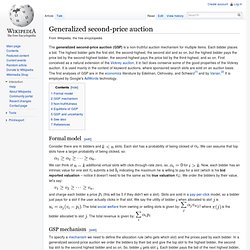
Each bidder places a bid. The highest bidder gets the first slot, the second-highest, the second slot and so on, but the highest bidder pays the price bid by the second-highest bidder, the second-highest pays the price bid by the third-highest, and so on. First conceived as a natural extension of the Vickrey auction, it in fact does conserve some of the good properties of the Vickrey auction. It is used mainly in the context of keyword auctions, where sponsored search slots are sold on an auction basis. Routage - Wikipedia, l'encyclopédie libre. Routing is the process of selecting best paths in a network.
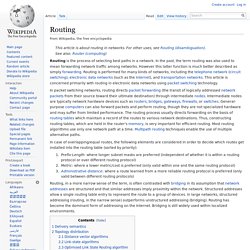
In the past, the term routing was also used to mean forwarding network traffic among networks. However this latter function is much better described as simply forwarding. Behavioral experiments on biased voting in networks. Author Affiliations Edited by Ronald L.
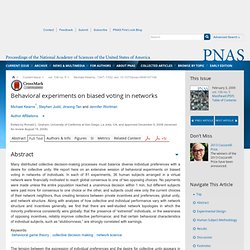
Graham, University of California at San Diego, La Jolla, CA, and approved December 5, 2008 (received for review August 19, 2008) Abstract Many distributed collective decision-making processes must balance diverse individual preferences with a desire for collective unity. Behavioral dynamics and influence in networked coloring and consensus. Author Affiliations Edited by Brian Skyrms, University of California, Irvine, CA, and approved July 16, 2010 (received for review February 3, 2010) A correction has been published Abstract.
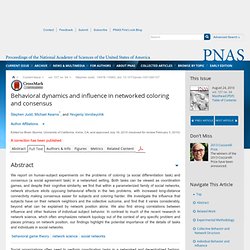
Game theory. Game theory is the study of strategic decision making.
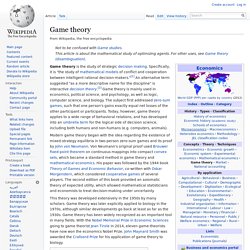
Specifically, it is "the study of mathematical models of conflict and cooperation between intelligent rational decision-makers. "[1] An alternative term suggested "as a more descriptive name for the discipline" is interactive decision theory.[2] Game theory is mainly used in economics, political science, and psychology, as well as logic, computer science, and biology. Expérience petit monde - Wikipedia, l'encyclopédie libre. The "six degrees of separation" model The small-world experiment comprised several experiments conducted by Stanley Milgram and other researchers examining the average path length for social networks of people in the United States.
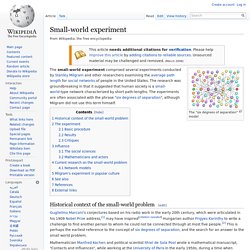
The research was groundbreaking in that it suggested that human society is a small-world-type network characterized by short path-lengths. The experiments are often associated with the phrase "six degrees of separation", although Milgram did not use this term himself. Historical context of the small-world problem[edit] Théorie des graphes. Équilibre de Nash - Wikipedia, l'encyclopédie libre. In game theory, the Nash equilibrium is a solution concept of a non-cooperative game involving two or more players, in which each player is assumed to know the equilibrium strategies of the other players, and no player has anything to gain by changing only their own strategy.[1] If each player has chosen a strategy and no player can benefit by changing strategies while the other players keep theirs unchanged, then the current set of strategy choices and the corresponding payoffs constitutes a Nash equilibrium.
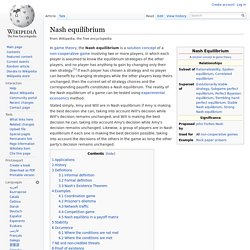
The reality of the Nash equilibrium of a game can be tested using experimental economics method. Stated simply, Amy and Will are in Nash equilibrium if Amy is making the best decision she can, taking into account Will's decision while Will's decision remains unchanged, and Will is making the best decision he can, taking into account Amy's decision while Amy's decision remains unchanged. Erdös Numéro du projet - Le projet Nombre Erdös - Université d'Oakland. Un algorithme pour mettre en rang une équipe de football. Introduction à la logique mathématique.